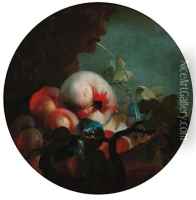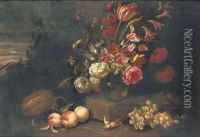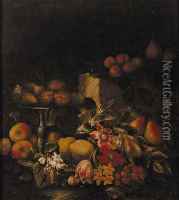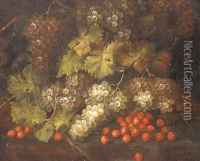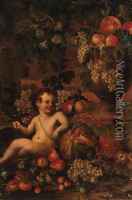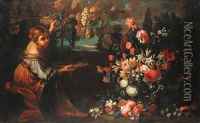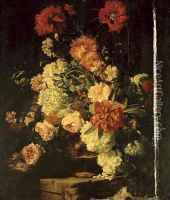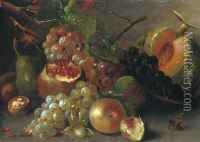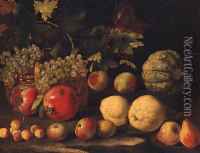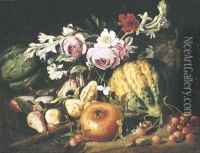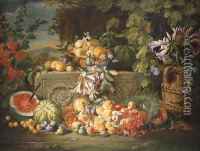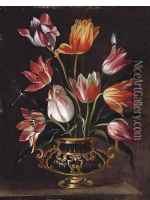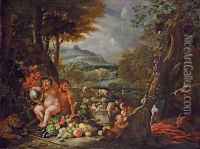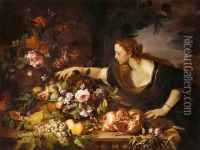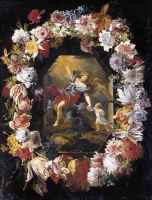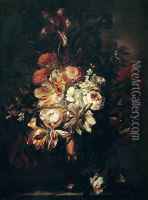Abraham Brueghel Paintings
Abraham Brueghel was a Flemish painter belonging to the famous Brueghel family of artists, which had a significant impact on the Northern European art scene. He was born in Antwerp in 1631 to Jan Brueghel the Younger and Anna-Maria Janssens. His grandfather, Pieter Bruegel the Elder, was a highly influential artist known for his landscapes and peasant scenes.
Abraham Brueghel's early life was spent in the thriving artistic environment of Antwerp, where he was influenced by his father's work and the rich tradition of Flemish painting. He was trained in the family workshop, where he developed a strong foundation in painting techniques and an acute attention to detail.
In his painting career, Abraham became known for his still life and flower pieces. His works often featured a combination of flowers, fruits, and sometimes animals, rendered with high precision and vivid colors. These paintings reflected the opulent still life tradition of the time, which was popular among the affluent classes of Northern Europe.
Seeking new opportunities, Brueghel moved to Italy around 1670, where he was influenced by the Roman and Neapolitan artistic circles. He became part of the vibrant art community in Rome and later settled in Naples. His style evolved during his time in Italy, as he incorporated elements of Italian Baroque into his work, which can be seen in the more dynamic compositions and dramatic use of light.
Despite his Flemish roots, Abraham Brueghel's work was well-received in Italy, and he worked for many important patrons, including the Medici family. His integration of Flemish techniques with Italian influences made his paintings unique and highly sought after. He also collaborated with other artists, such as the animal painter Baldassare De Caro, which allowed him to combine his still lifes with De Caro's skill in depicting animals.
Abraham Brueghel continued to paint until his death in Naples in 1690. His legacy includes a body of work that exemplifies the cross-cultural exchange between the Northern and Southern European artistic traditions. Although not as widely recognized as his grandfather or father, Abraham Brueghel's contribution to the art world remains significant, particularly in the context of still life painting.

